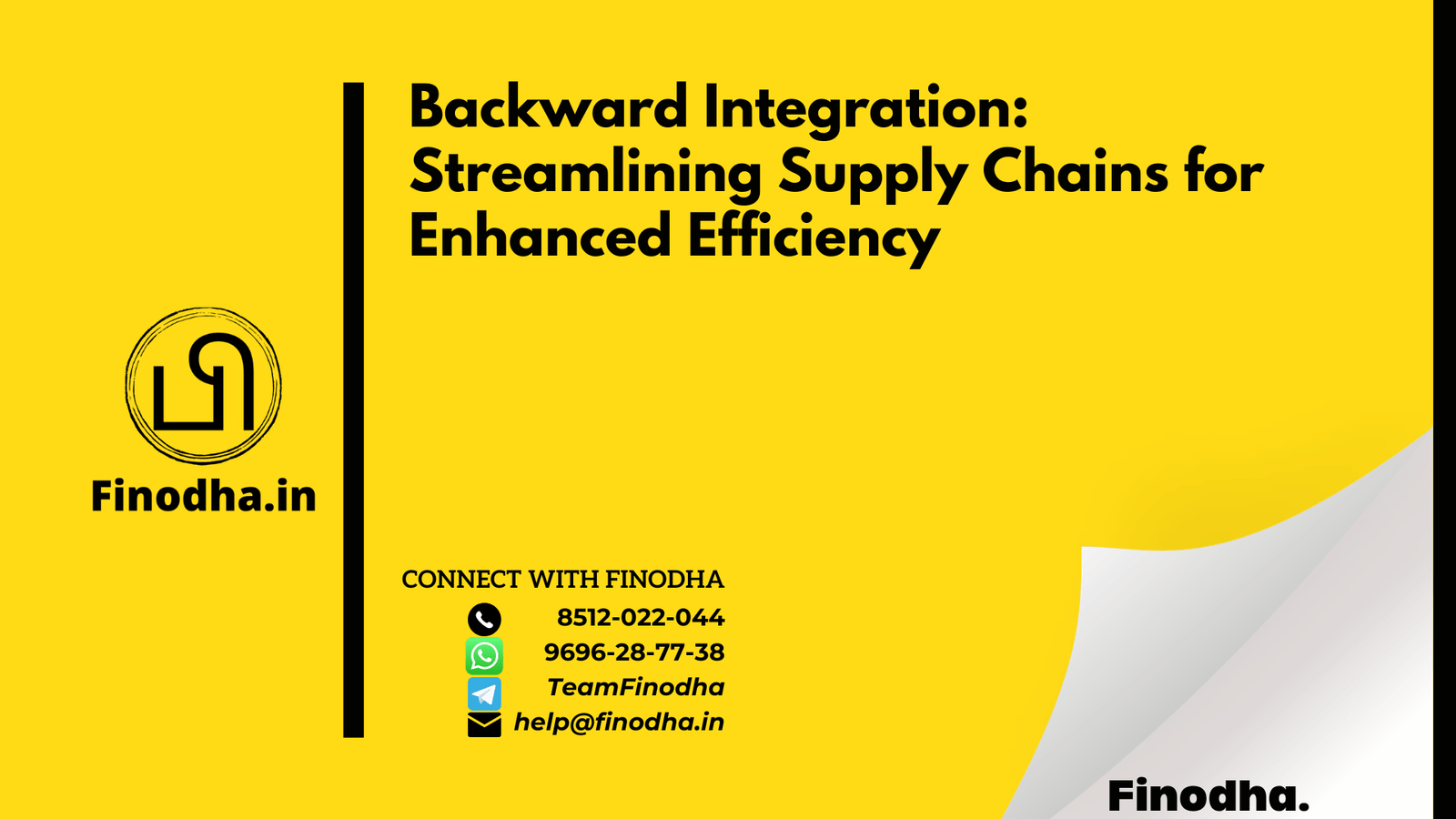Important Keywords: Backward Integration, Vertical Integration, Supply Chain, Efficiency, Cost Savings, Quality Control, Competitive Advantage, Manufacturing, Indian Textile Industry, Financial Resources.
Table of Contents
Introduction:
Backward integration is a strategy of vertical integration where a company expands its operations by acquiring or establishing entities that supply the products or services necessary for its production. This article aims to explain the concept of backward integration in a simple and easily understandable manner, specifically tailored for average Indian readers with limited English grammar knowledge.
Sub-headings with Short Paragraphs:
- Backward Integration Explained:
Backward integration is a form of vertical integration that enables a company to take control of a portion or the entire supply chain involved in its production process. By engaging in backward integration, a company can purchase or merge with suppliers or set up its own subsidiaries to handle the tasks previously performed by external entities. This strategy aims to increase efficiency and gain more control over the supply chain. - How Backward Integration Works:
Backward integration involves a company expanding its operations upstream in the supply chain, acquiring or partnering with suppliers or manufacturers. This allows the company to have a direct influence on the quality, availability, and cost of the supplies or raw materials required for its production. By eliminating intermediaries and integrating the supply chain, companies can streamline operations, reduce costs, and enhance control over the production process. - Advantages of Backward Integration:
- Increased efficiency: Backward integration enables companies to have more control over the supply chain, ensuring a reliable and timely supply of materials or components, leading to improved efficiency.
- Cost savings: By eliminating intermediaries, companies can reduce costs associated with markups and transportation. Backward integration can also provide opportunities for bulk purchasing and better negotiation power.
- Quality control: With backward integration, companies have greater oversight of the production process and can maintain strict quality standards throughout the supply chain.
- Competitive advantage: By having a vertically integrated supply chain, companies can respond more effectively to market demands, innovate faster, and differentiate themselves from competitors.
- Disadvantages of Backward Integration:
- Capital-intensive: Backward integration often requires significant investment, such as acquiring manufacturing plants or setting up new operations. This can strain a company’s financial resources and require substantial debt financing.
- Increased operational complexity: Managing a vertically integrated supply chain can be more challenging and complex, requiring expertise in multiple areas of the production process.
- Risk concentration: By relying heavily on internal suppliers, companies may become more vulnerable to disruptions within their own operations, such as production delays or quality issues.
- Limited flexibility: Backward integration can reduce a company’s flexibility in adapting to changes in the external market. Long-term commitments to suppliers may limit the ability to switch suppliers or adapt to evolving customer preferences.
Self-explanatory Bullets:
- Backward integration involves a company expanding upstream in the supply chain by acquiring or partnering with suppliers or manufacturers.
- It aims to enhance efficiency, cost savings, quality control, and competitive advantage.
- Backward integration requires significant capital investment and may increase operational complexity.
- Risks include concentration of risk and reduced flexibility in the market.
FAQ:
Q: What is the difference between backward integration and forward integration?
A: Backward integration involves expanding operations upstream in the supply chain by acquiring or partnering with suppliers or manufacturers. In contrast, forward integration occurs when a company expands downstream by acquiring or controlling distribution channels or retail outlets.
Q: Why do companies pursue backward integration?
A: Companies pursue backward integration to gain more control over the supply chain, improve efficiency, reduce costs, enhance quality control, and gain a competitive edge in the market.
Q: Is backward integration suitable for all businesses?
A: Backward integration may be more suitable for certain industries, such as manufacturing or retail, where controlling the supply chain can lead to significant benefits. However, it may not be feasible or advantageous for all businesses, depending on their specific circumstances and industry dynamics.
Example:
Let’s consider an Indian textile manufacturer, “FabTex India Pvt. Ltd.” To ensure a steady and reliable supply of high-quality raw materials, FabTex decides to pursue backward integration. They acquire a cotton farm and establish their own spinning mill. By owning these upstream operations, FabTex gains control over the quality, cost, and availability of cotton, a critical raw material for their textile production. This integration allows them to streamline the supply chain, reduce dependency on external suppliers, and have better control over the production process.
Key Takeaways:
- Backward integration involves a company expanding upstream in the supply chain by acquiring or partnering with suppliers or manufacturers.
- It offers advantages such as increased efficiency, cost savings, quality control, and competitive advantage.
- However, backward integration requires substantial capital investment, increases operational complexity, and may limit flexibility.
- Backward integration should be evaluated based on the specific needs and dynamics of each business and industry.
Conclusion:
Backward integration is a strategic approach that allows companies to take control of their supply chain by acquiring or establishing entities involved in the production process. By integrating upstream operations, companies can enhance efficiency, reduce costs, ensure quality control, and gain a competitive edge. However, backward integration requires careful consideration of the associated costs, complexities, and potential risks. Each company must evaluate whether backward integration aligns with its business goals, resources, and industry dynamics to make informed decisions that promote growth and success.
Popular Tags:
Capital gains (21) CGST (280) Chapter VI-A (15) e-Compliance Portal (21) E-Verify (20) economic growth (20) F&O Trading (29) F.No.354/117/2017-TRU (23) F. No. CBIC-20001/4/2024-GST (15) Financial planning (15) financial stability (16) GST (1458) IGST (223) Income from House Property (17) Income Heads (16) Income Source (14) Income tax (110) Income Tax Account (15) Income Tax Filing (20) Indian context (22) Indian investors (16) ITR-3 (19) ITR Form (20) P&L Statement (24) PAN (13) Risk Management (20) Salary Income (19) Section 7(1) UTGST Act 2017 (14) Section 8(1) UTGST Act 2017 (26) section 9 (18) section 10 (28) section 15 (13) section 25 (17) section 39 (24) section 49 (16) section 50 (16) section 51 (13) Section 52 (16) Section 54 (13) section 73 (21) section 74 (22) SGST (223) Speculative Income (14) Trading Income (33) UTGST (78)




